How to Set an Analog Clock & Play Fun Time Games Online
Learning how to set an analog clock can feel like a puzzle for many kids (and even some adults!). Those moving hands can be tricky! But what if mastering time could be as exciting and simple as playing with your favorite toy? This guide will show parents and kids how to easily set an analog clock using our interactive online tool, turning practice into an exciting game. Ready to dive into a world of clock-setting fun? Start practicing today!
Meet Your Interactive Adjustable Clock Online
Learning to tell time on an analog clock doesn't have to be a chore. Imagine a colorful, friendly clock that responds to your touch, letting you move its hands with ease. That's exactly what you'll find at our interactive online tool! Our interactive adjustable clock online is designed to make learning intuitive and engaging, perfect for curious minds who love to explore and play. It's a free online learning clock that simplifies complex concepts. You can try our fun tools right now!
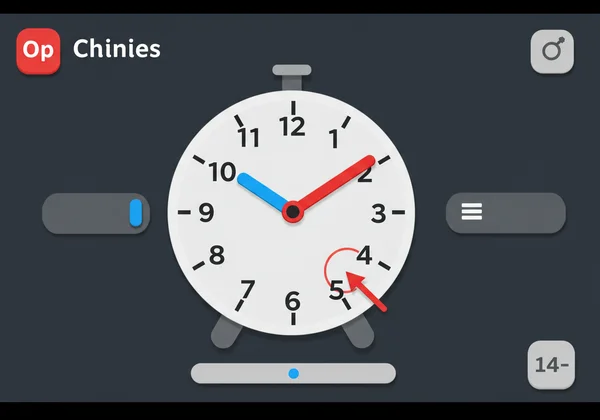
The Magic of Dragging Hands: Blue Hour, Red Minute
One of the coolest features of our interactive clock is the ability to simply drag the hands. You'll notice two special hands: a shorter, blue hour hand and a longer, red minute hand. Forget fiddly buttons or complicated settings! Just use your mouse or finger to glide these colorful hands around the clock face. This direct clock hand movement makes understanding their roles incredibly concrete and hands-on for learners. It’s a playful way to grasp time concepts.
Instant Feedback: Watch the Digital Time Change
As you move the blue hour hand and red minute hand, something amazing happens at the top of the screen: you'll see the digital time instantly update! This instant feedback is a powerful learning tool. It immediately shows you the consequence of each adjustment, helping to solidify the connection between the analog hands and the digital display. No more guessing if you've set the time correctly. It's like having a personal tutor, ready to affirm your progress. This feature boosts confidence and reinforces understanding, turning every adjustment into a mini-lesson. It's what makes our educational clock so effective.
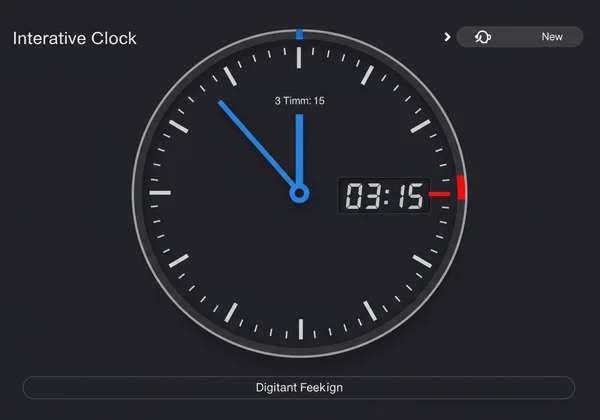
Step-by-Step: How to Set Any Time on Your Analog Clock
Now that you've met our friendly clock, let's learn exactly how to set any time on your analog clock using our interactive tool. It’s a straightforward process that breaks down complex time concepts into simple, manageable steps. This method is ideal for teaching kids how to read an analog clock from scratch.
Starting with the Hour: Moving the Blue Hand
First, let's focus on the shorter, blue hour hand. This hand tells us the hour. To set the hour, gently drag the blue hand to point to the number representing the hour you want. For example, if you want to set the time to 3 o'clock, move the blue hand until it points directly at the 3. Remember, the blue hand moves slower than the red one, making it easier to grasp the hourly progression. This initial clock hand movement is crucial for basic time recognition.
Mastering the Minutes: Guiding the Red Hand
Next, it's time to work with the longer, red minute hand. This hand is responsible for the minutes. Each number on the clock also represents a multiple of five for the minutes (e.g., 1 is 5 minutes, 2 is 10 minutes, and so on). To set the minutes, drag the red hand around the clock face. As you move it, watch the digital time change. If you want to set 3:15, first set the blue hand to 3, then guide the red hand to the 3 (which represents 15 minutes). This systematic approach helps in reading clocks for kids effectively.
Understanding Hand Relationships: Why Both Hands Move
Perhaps the trickiest part for young learners is understanding why both hands move together. As you drag the red minute hand around the clock, you'll notice the blue hour hand also subtly shifts. This is because the hour hand isn't just pointing directly at a number for the entire hour; it's constantly progressing towards the next hour as the minutes tick by. For example, at 3:30, the blue hour hand will be halfway between the 3 and the 4. Our adjustable clock online visually demonstrates this relationship, making it easy to see how the minute hand's progress influences the hour hand's position. This visual clock hand movement helps build a deeper understanding of time.
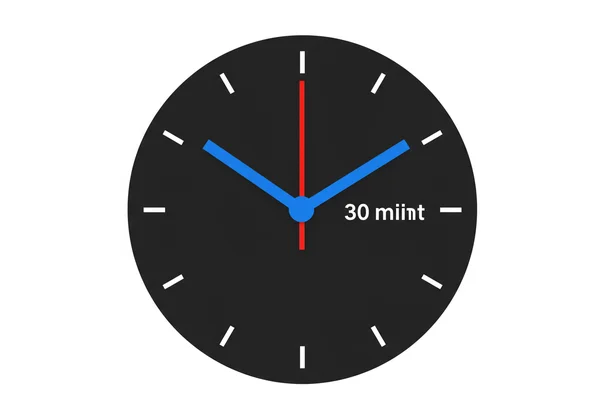
Unleash the Fun: Engaging Time Setting Games & Challenges
Setting the time isn't just a learning exercise; it's a fantastic opportunity for engaging time setting games! Our interactive clock offers several built-in challenges that turn practice into play, making it a true fun timetelling games playground.
Random Time Challenge: Test Your Setting Skills
Ready for a challenge? Click the "Random Time" button on our online analog clock. The digital display will show a random time, and your mission is to accurately set the analog hands to match it. This is a brilliant way to test your setting skills and quick thinking. It provides endless practice opportunities and helps build confidence in recognizing various times. You can retry as many times as you like, making it a no-pressure learning environment. Try the random time challenge and see how quickly you can master different times!
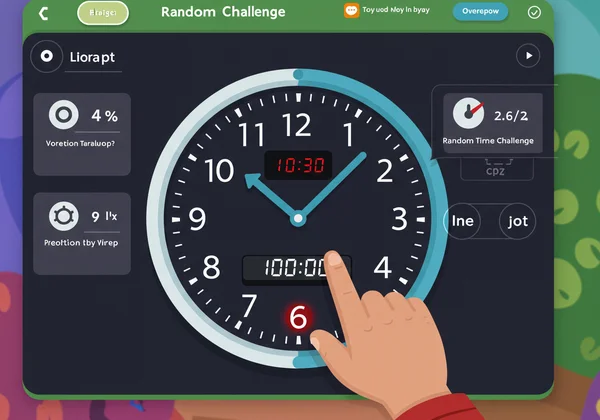
Hide & Seek: Can You Set the Hidden Time?
For an even greater test of your time-telling abilities, try the "Hide Digital Time" feature. This hides the digital display, prompting you to set the analog clock to a time given to you (perhaps by a parent or teacher), or even just to practice setting a random time in your head. Once you've set the hands, click "Show Digital Time" to check your answer! This 'hide and seek' game makes practicing telling time games more exciting and truly evaluates your understanding of how to read an analog clock. It's a great way to build independence.
Lock the Hand: Focused Practice for Each Skill
Sometimes, you might want to focus on just one aspect of time-telling. Our "Lock" feature allows you to do just that! You can lock either the blue hour hand or the red minute hand in place. This means you can concentrate solely on moving the blue hand to understand hours, or solely on guiding the red hand to master minutes. This targeted, focused practice for each skill helps learners overcome specific difficulties without being overwhelmed. It's like having personalized training sessions for telling time, ensuring a deeper understanding of clock hand movement.
Ready to Set, Play, and Master Time?
Mastering how to set an analog clock has truly become a fun, engaging experience. Our platform transforms traditional learning into an interactive adventure, providing a free and playful space for kids, parents, and teachers. Whether you're gently dragging the colorful hands or diving into exciting time-setting challenges, our interactive clock is designed to be your ultimate companion for mastering analog time.
We can't wait for you to explore the full potential of our adjustable clock online. It's truly a playground where every movement builds confidence and makes time-telling a joy. Ready to dive in? Start your fun time-telling journey right now! Visit our interactive clock and begin your adventure!
Your Questions About Setting Analog Clocks Answered
How do you explain the hour and minute hand to a child?
A great way to explain the hands is to tell a story! The short, blue hour hand is like the "boss" – it moves slowly and tells us the big number, the hour. The long, red minute hand is like the "speedy helper" – it moves much faster and tells us the small numbers, the minutes. When the speedy helper goes all the way around, the boss moves to the next big number! This helps them visualize clock hand movement in a memorable way.
Why are analog clocks still taught in school?
Even with digital clocks everywhere, analog clocks are still taught because they help children understand the concept of time in a spatial and proportional way. Seeing the hands move around a circle helps kids grasp concepts like "half past," "quarter to," and the duration of time more intuitively. It builds a foundational understanding that digital numbers alone might not convey. Our teaching clock makes this learning visual and tactile.
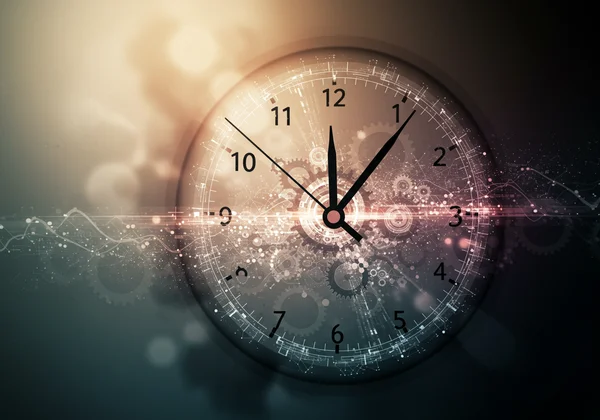
Are analog clocks better for learning time concepts?
Many educators believe analog clocks are better for learning fundamental time concepts, especially for younger children. The visual representation of the clock face and the relative positions of the hands helps develop spatial reasoning and a deeper comprehension of time as a continuous cycle. Digital clocks, while convenient, primarily show discrete numbers. The interactive nature of our online analog clock makes this learning even more effective for reading clocks for kids.
What age should a child be able to set an analog clock?
Generally, children start grasping basic time concepts around age 5-7. By ages 7-9, most children can read and begin to set an analog clock to the hour and half-hour. Mastering minutes and quarter-hours often comes a bit later. Our learning clock is designed to support children at various stages, allowing them to practice setting times at their own pace and skill level, making it a versatile educational clock.